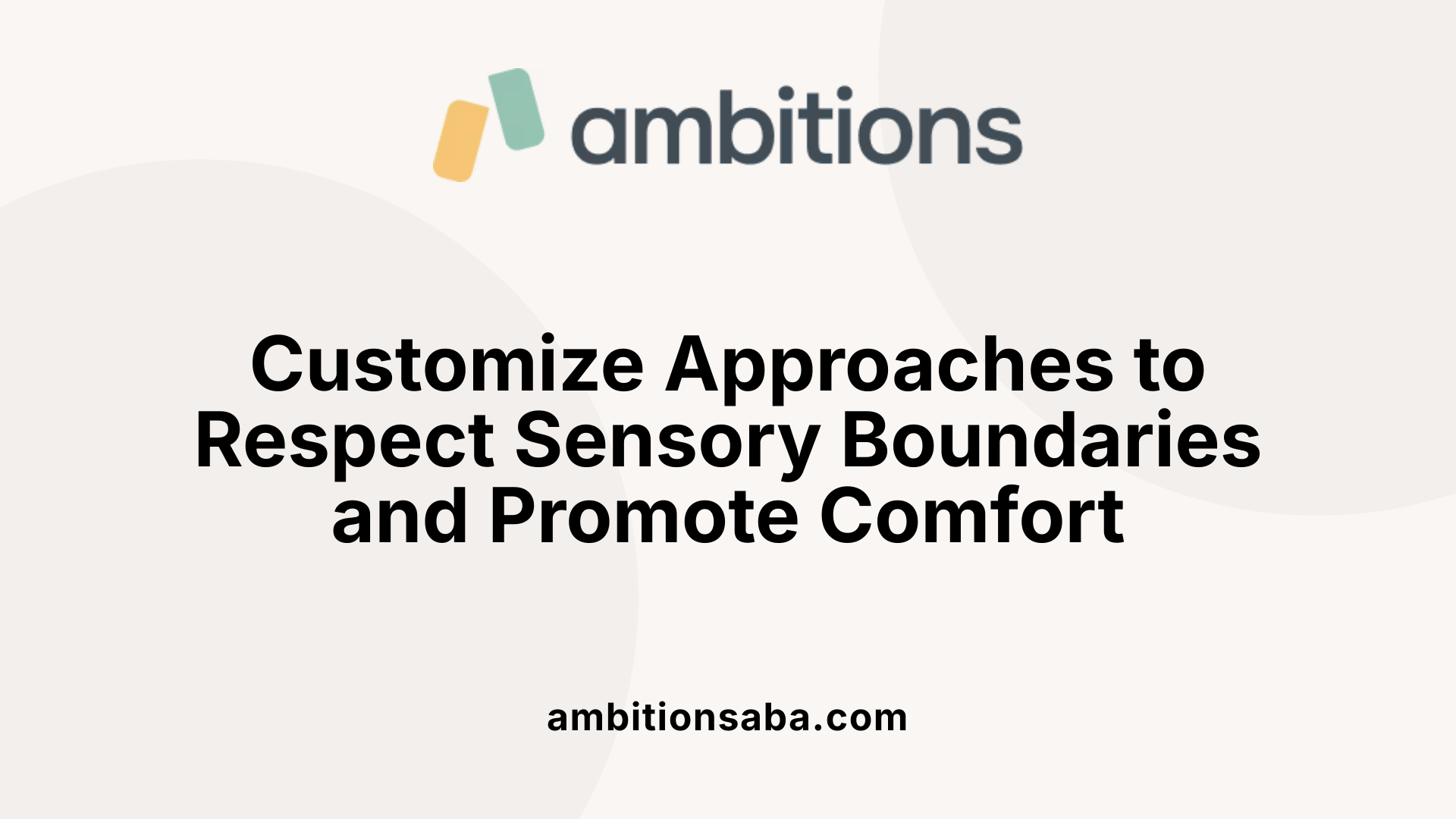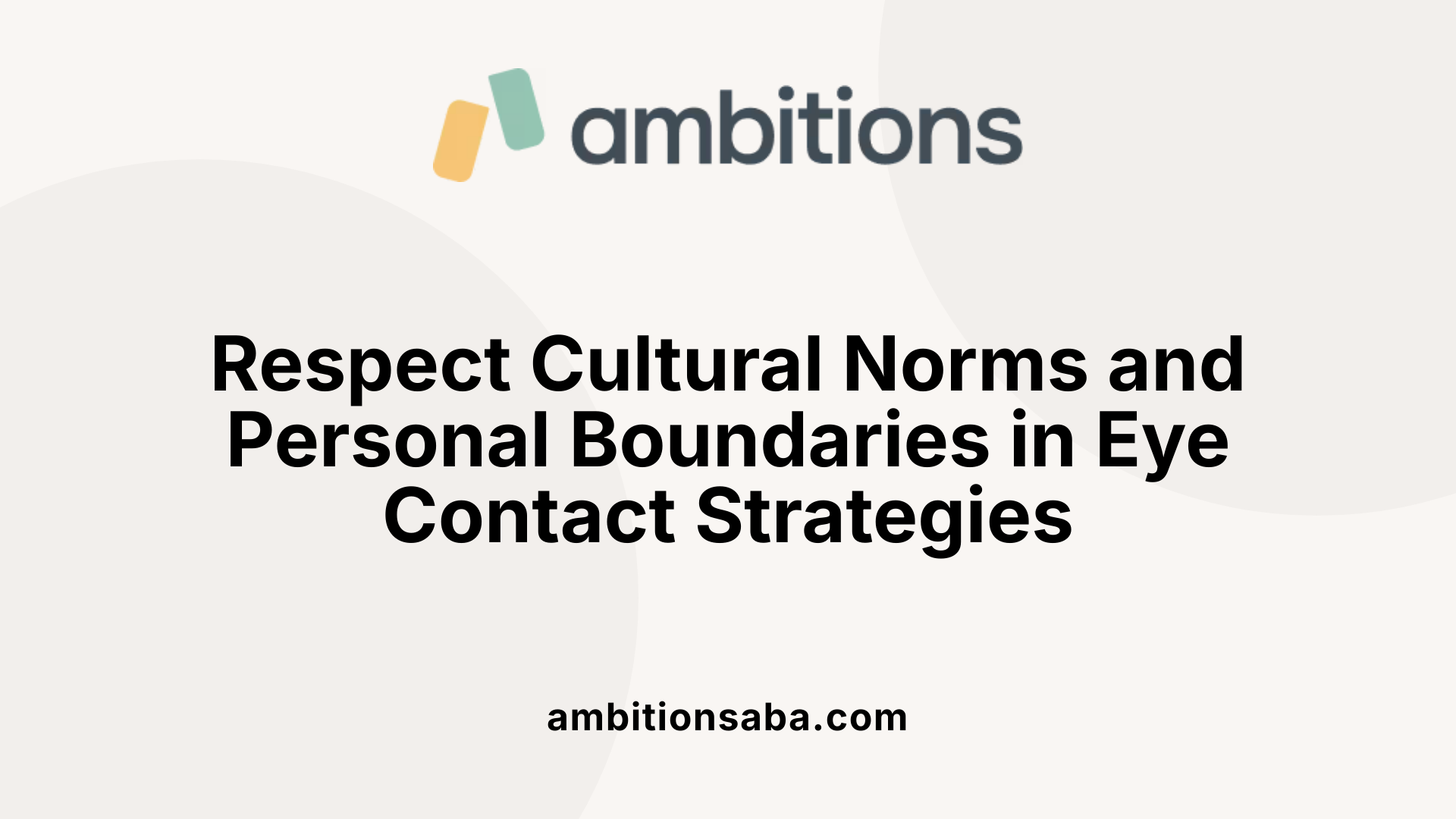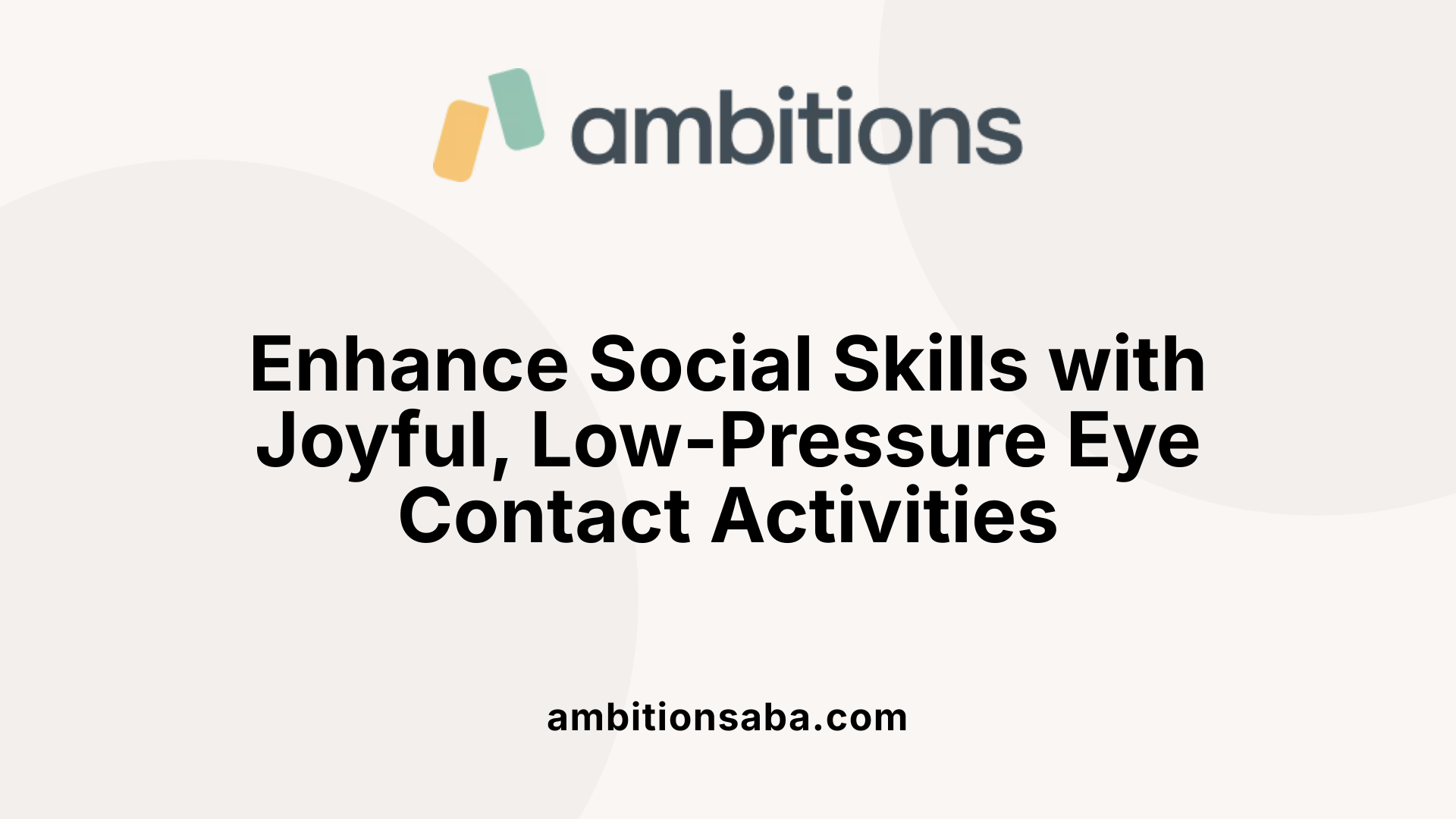Enhancing Autism Therapy Through Effective Visual Supports
Understanding the Foundations of Eye Contact in Therapy
Eye contact is a cornerstone of social interaction and communication. In therapy, especially when working with children or individuals with autism, understanding the underlying reasons for avoidance or difficulty with eye contact is crucial. It’s important to recognize that for many autistic individuals, eye contact is not instinctive and can contribute to sensory overwhelm due to sensitivities and heightened cortical activity. Moreover, environments perceived as unsafe can increase avoidance behaviors, as individuals seek to reduce overstimulation and maintain sensory safety. This nuanced understanding sets the stage for tailored, sensitive strategies that foster genuine connection and social skills development.
Adapting Strategies to Individual Needs and Sensory Sensitivities
 Many Autistic individuals find eye contact to be non-instinctive and sensory experiences that can be overwhelming. Sensory sensitivities, heightened cortical excitability, and feelings of unsafe environments often contribute to their avoidance of direct eye gaze. Creating a supportive atmosphere involves recognizing these factors and tailoring approaches to each person's comfort levels.
Many Autistic individuals find eye contact to be non-instinctive and sensory experiences that can be overwhelming. Sensory sensitivities, heightened cortical excitability, and feelings of unsafe environments often contribute to their avoidance of direct eye gaze. Creating a supportive atmosphere involves recognizing these factors and tailoring approaches to each person's comfort levels.
One effective approach is to accept alternative ways of engaging that do not rely solely on eye contact. For example, individuals may prefer looking at the nose, forehead, or mouth, which are less intense sightlines that still facilitate social connection. Using visual supports, such as pictures of eyes or social stories, can also reinforce understanding and expectations around eye contact.
Safe spaces play a crucial role in improving comfort. Familiar environments with minimal sensory overload—dimmed lights, reduced noise, and sensory buffers—help individuals feel secure enough to attempt eye contact. Many find that as their comfort increases in these spaces, so does their ability to make meaningful eye contact.
Strategies designed to improve eye contact in therapy or social settings are most successful when personalized. Techniques include gradual exposure, such as brief, fleeting glances progressing toward sustained gaze, paired with positive reinforcement like praise or rewards. Visual prompts and modeling by trusted adults further support skill development.
Incorporating engaging activities like turn-taking games, interactive story-telling, and playful activities such as peek-a-boo can make eye contact feel more natural and fun. These activities create positive associations, reducing anxiety around face-to-face interaction.
An important consideration is to avoid forcing eye contact, as this can increase stress and counteract progress. Instead, provide choices and use prompts only when appropriate, respecting the individual’s sensory limits. Collaborating with occupational or speech-language therapists can offer tailored interventions, ensuring strategies are aligned with each person's sensory profile and communication preferences.
By focusing on patience, positive reinforcement, and respecting sensory boundaries, caregivers and professionals can foster a supportive environment that respects individual differences while encouraging social engagement.
Techniques and Interventions for Developing Eye Contact Skills in Children and Adults

What techniques can improve eye contact skills?
Improving eye contact involves practicing in various supportive contexts, such as in front of a mirror, during interactions with friends or family, or through role-playing scenarios. Employing strategies like the triangle method, where attention shifts between the eyes, nose, and mouth every few seconds, helps make gaze more natural. The 50/70 rule suggests maintaining eye contact for about half to two-thirds of a conversation, which can enhance comfort.
Gradual progress is encouraged, such as increasing eye contact duration from brief looks to holding gaze for four to five seconds at a time. This approach builds confidence while reducing nervousness. Observing individuals who display good social skills and seeking feedback from trusted colleagues or therapists can further refine approach and understanding.
It is crucial to strike a balance—steady, genuine eye contact fosters trust and engagement, while avoiding prolonged, intense gaze prevents discomfort. With patience and consistent practice, improved eye contact enhances communication, social connectedness, and mutual understanding.
Supporting Children and Adults by Incorporating Activities and Rewards

How can I support the development of eye contact in children?
Supporting the growth of eye contact skills in children involves creating a nurturing environment where making eye contact feels safe and rewarding. Using play-based approaches is especially effective; engaging children with familiar, enjoyable games like peek-a-boo, hide and seek, or interactive story-time makes eye contact a positive experience.
Incorporating preferred items and interests can motivate children to participate. For example, holding a favorite toy or offering a beloved snack near your face encourages the child to look at you to access the object. This natural pairing of eye contact and a reward makes the connection more appealing.
Implementing reward systems and positive reinforcement also play crucial roles. When a child makes eye contact, praising them verbally, giving treats, or engaging in tickling or fun activities can reinforce the behavior. Consistent, small rewards help motivate continued effort and build confidence.
Tools such as visual supports, like pictures of eyes or social stories, clarify expectations, while turn-taking games foster social interaction that naturally involves looking at others. Tailoring these methods to each child's preferences, sensitivities, and comfort levels ensures a supportive and effective approach.
By gradually increasing the duration and frequency of eye contact through these engaging strategies, caregivers and professionals can help children develop foundational social skills in a positive, non-threatening manner.
Creating a Cultural and Emotional Framework for Eye Contact Techniques

How should we respect cultural norms when encouraging eye contact?
Cultural norms play a significant role in how eye contact is perceived and practiced across different communities. In some cultures, direct eye contact is seen as a sign of confidence and engagement, while in others, it may be considered disrespectful or intrusive. When working with autistic children or individuals, it is essential to approach eye contact strategies with cultural sensitivity.
Educators, therapists, and caregivers should familiarize themselves with the cultural background of the individual. Accepting alternative modes of demonstrating attention, such as body orientation or verbal acknowledgment, can respect cultural expectations while still fostering social communication.
What are trauma-informed approaches to managing eye contact?
For some individuals, especially those with trauma histories, direct eye contact can be overwhelming and induce anxiety or distress. Using trauma-informed practices involves creating safe, predictable environments and avoiding forcing eye contact.
Practitioners should focus on building trust through consistent routines and positive interactions. Encouraging alternative engagement methods, such as looking at the nose, forehead, or mouth, can reduce sensory overload.
Gradually, with patience and sensitivity, individuals can be supported to explore eye contact at their own pace, which helps prevent retraumatization and promotes emotional safety.
How can we build trust and confidence through eye contact techniques?
Trust and confidence are foundational for encouraging eye contact. Starting with small, achievable steps—like fleeting glances or looking at nearby objects—can build comfort.
Positive reinforcement, such as praise or rewards when the individual makes eye contact, helps associate the behavior with positive feelings. Including preferred activities or favorite items can motivate participation.
Modeling good eye contact oneself and creating playful, engaging routines—like peek-a-boo or turn-taking games—further foster a trusting environment. Over time, these strategies help individuals feel more confident in using eye contact as part of social exchanges.
Fostering Confidence and Connection through Positive Interactions

What are practical tips for enhancing social interaction through eye contact?
Practicing consistent and intentional eye contact in relaxed, low-pressure situations can significantly boost confidence and improve social interactions for autistic individuals. It’s helpful to focus on making eye contact for about 4 to 5 seconds at a time, which signals attentiveness without overwhelming sensory sensitivities.
Using other friendly nonverbal cues like smiling and maintaining open body language can also foster better connection. Activities combined with eye contact, such as active listening and engaging in conversations, stimulate areas of the brain involved in empathy and social understanding, helping to build trust.
It is important to balance eye contact with other social signals like nodding or verbal affirmations, especially considering cultural and situational norms. Creating positive experiences around eye contact—like playing interactive games or sharing enjoyable routines—can make the process feel more natural.
In therapy, encouraging these practices gradually and integrating them into everyday interactions helps develop social skills and confidence. Overall, focus on making eye contact a part of joyful, supportive exchanges, rather than a strict requirement, to nurture genuine social connections.
Moving Forward: Tailoring Eye Contact Strategies for Lasting Impact
Implementing effective strategies for increasing eye contact in therapy involves a nuanced understanding of individual needs, cultural contexts, and sensory sensitivities. Creating safe, engaging, and supportive environments, employing gradual shaping techniques, and using positive reinforcement are foundational. Recognizing that eye contact is a complex social skill that can be developed over time with patience and respect fosters trust and communication. Tailoring approaches to each person’s unique experiences and comfort levels ensures that therapy not only improves social skills but also enhances overall confidence and connection. As therapists, educators, and caregivers continue to refine these strategies, they can foster meaningful social interactions that support emotional well-being and social growth.
References
- Understanding Autistic Differences in Eye Contact - Reframing Autism
- Mastering Eye Contact in ABA Therapy: Importance, Strategies, and ...
- 3 Ways To Improve Eye Contact Skills | Office of Graduate Studies
- Look At Me: How To Encourage Eye Contact - How to ABA
- Tips to Improve Eye Contact for Children with Autism
- Fort Myers OT Insight: "How Can I Help My Child With Eye Contact?"
- autism and eye contact, from a speech therapy viewpoint
- Eye Contact in Therapy, Part I | Psychology Today
- How To Improve Your Eye Contact - BetterHelp

